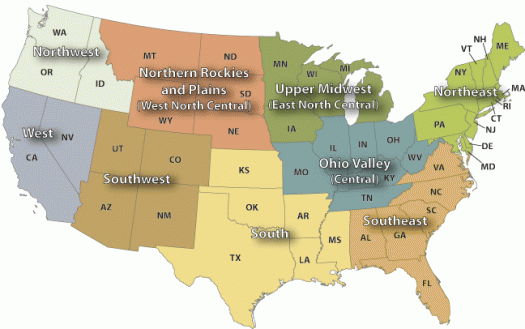Ozone Trends
National Trends in Ozone Levels
Using a nationwide network of monitoring sites, EPA has developed ambient air quality trends for ozone. Trends are shown here for the 8-hour ozone standards. Under the Clean Air Act, EPA sets and reviews national air quality standards for ozone. Air quality monitors measure concentrations of ozone throughout the country. EPA, state, tribal and local agencies use that data to ensure that ozone is at levels that protect public health and the environment. Nationally, average ozone levels declined in the 1980's, leveled off in the 1990's, and showed a notable decline after 2002. For information on ozone standards, sources, health effects, and programs to reduce ozone, please see www.epa.gov/ozone-pollution.
How to Interpret the Graphs
Regional Trends in Ozone Levels
Air quality trends can vary regionally. The following climatically consistent regions within the contiguous United States provide a relevant way to look at regional trends in air quality.
 Source: NOAA National Climatic Data CenterSelect a region: (graph appears below)
Source: NOAA National Climatic Data CenterSelect a region: (graph appears below)
